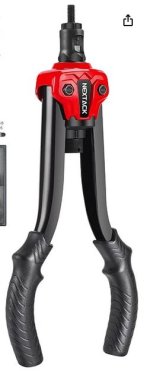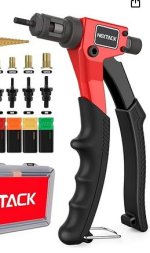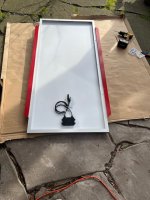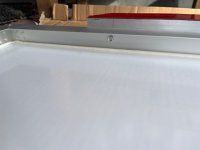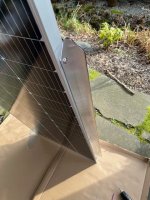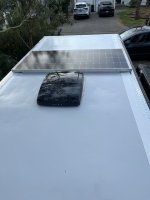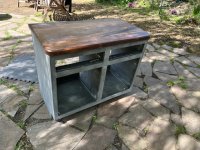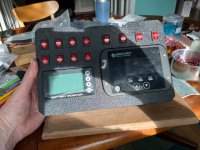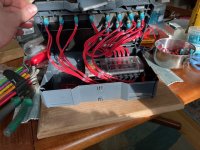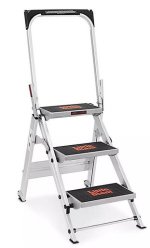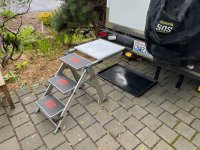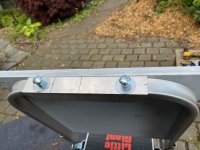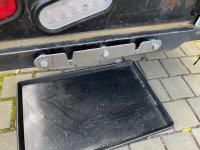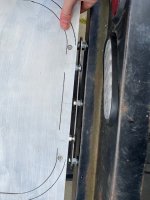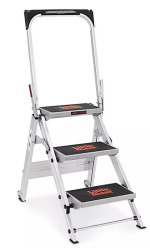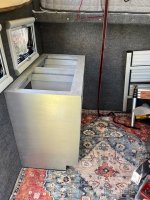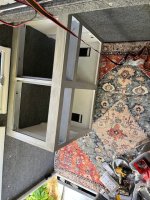Fenderfour
Well-known member
I've been trying to get some work done during the relatively dry Seattle winter we are having. I managed to finish insulating the lower camper with 1.5" XPS foam. I found the best way to cut it is with a sharp snap-blade knife and make a few passes. The insulation saws and even the serrated knife make too much 'chaff'. I wanted to set up a large frame hotwire, but never got around to it.
I found some great garage tiles to use as flooring at Lowes. They are ~.2" thick x 20" square vinyl and are fairly easy to cut. They were at the local Lowes but I can't find them online. I know lots of folks go with Lonseal coins, and I get it, and it's really expensive. These tiles were less per square foot, thicker, and easy to install. The new flooring also filled in the exposed height of the seat tracks I installed to allow for a variable interior. It's nice having a 'real' floor instead of tromping on the painted Coosa or the towels I had down to catch mud.
I also found a solid product for wall covering. Cheap indoor/outdoor rugs. These are particularly well suited to my build since the cabin is 6'x6'. I looked at automotive carpet, speaker box carpet, and few other things like that. Most of them didn't have a bonded back so they could form a bit better. I've used rugs similar to the link above for camping and they are pretty good. Lightweight, durable, and I don't have to buy a huge roll. I got the lower bed area covered in carpet and will get the other walls covered when we have another good weather day. I want to get the carpet behind the window flanges, so they need to come out one more time. The carpet is installed with carpet tape, and the bonded back made that easy. I also have a series of snaps installed on the upper edge to eventualy create insulated curtains for the pop-up, but for now, they will help hold the wall covering up.
I've followed the discussions here and elsewhere on interior covering. Seems counter-productive to put 1/2" or 3/4" T&G wood on the inside of a camper. It takes up volume, is heavy, needs additional finishing, etc... I was interested in some of the coroplast ideas, but i wanted something to cut down on the harsh soundscape a semi-rigid material would create. I could have covered the coroplast with this carpet, but why? Sometimes our ideas of how to build something stem from familiar systems, like our homes. Wood paneling makes sense in a home. Does it make sense in a camper? Putting a rigid sheet of 'something' over the structure is also a holdover from our homes, but is it necessary?
I've been aware of moisture management for a fair bit of my build. There are paths for water to exit all walls, the floor, etc... Nothing but the exterior roof is fully sealed. All walls and the floor have paths facing aft to drain. The interior wall covering is permeable to allow dray air to get into the insulated area when the heater is running.
I'll keep building small, light, and simple. Looking for a reliable easy to maintain toy to enjoy the world and nature. Not a tech-laden hideaway to watch the game while I park under the trees.
I found some great garage tiles to use as flooring at Lowes. They are ~.2" thick x 20" square vinyl and are fairly easy to cut. They were at the local Lowes but I can't find them online. I know lots of folks go with Lonseal coins, and I get it, and it's really expensive. These tiles were less per square foot, thicker, and easy to install. The new flooring also filled in the exposed height of the seat tracks I installed to allow for a variable interior. It's nice having a 'real' floor instead of tromping on the painted Coosa or the towels I had down to catch mud.
I also found a solid product for wall covering. Cheap indoor/outdoor rugs. These are particularly well suited to my build since the cabin is 6'x6'. I looked at automotive carpet, speaker box carpet, and few other things like that. Most of them didn't have a bonded back so they could form a bit better. I've used rugs similar to the link above for camping and they are pretty good. Lightweight, durable, and I don't have to buy a huge roll. I got the lower bed area covered in carpet and will get the other walls covered when we have another good weather day. I want to get the carpet behind the window flanges, so they need to come out one more time. The carpet is installed with carpet tape, and the bonded back made that easy. I also have a series of snaps installed on the upper edge to eventualy create insulated curtains for the pop-up, but for now, they will help hold the wall covering up.
I've followed the discussions here and elsewhere on interior covering. Seems counter-productive to put 1/2" or 3/4" T&G wood on the inside of a camper. It takes up volume, is heavy, needs additional finishing, etc... I was interested in some of the coroplast ideas, but i wanted something to cut down on the harsh soundscape a semi-rigid material would create. I could have covered the coroplast with this carpet, but why? Sometimes our ideas of how to build something stem from familiar systems, like our homes. Wood paneling makes sense in a home. Does it make sense in a camper? Putting a rigid sheet of 'something' over the structure is also a holdover from our homes, but is it necessary?
I've been aware of moisture management for a fair bit of my build. There are paths for water to exit all walls, the floor, etc... Nothing but the exterior roof is fully sealed. All walls and the floor have paths facing aft to drain. The interior wall covering is permeable to allow dray air to get into the insulated area when the heater is running.
I'll keep building small, light, and simple. Looking for a reliable easy to maintain toy to enjoy the world and nature. Not a tech-laden hideaway to watch the game while I park under the trees.

